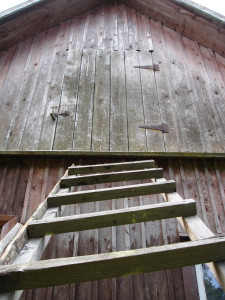Ladder Safety – Ignore it at Your Peril
November 18, 2011 - 4 minutes read Sometimes jobs that need doing on church property necessitate the use of a ladder. While some of these may be relatively small tasks such as changing a light bulb, others might be more risky and serious, and rather than pay a contractor to do the job, an employee or volunteer may decide to undertake the task themselves. This may be fine in many instances as long as certain safety procedures are strictly adhered to.
Sometimes jobs that need doing on church property necessitate the use of a ladder. While some of these may be relatively small tasks such as changing a light bulb, others might be more risky and serious, and rather than pay a contractor to do the job, an employee or volunteer may decide to undertake the task themselves. This may be fine in many instances as long as certain safety procedures are strictly adhered to.
According to Access Safety Australia, falls account for around 30% of all fatal injuries, and are the most frequent cause of injury-related death in Australia. Ignoring safety measures when using ladders can result in very serious injuries, ones that might have been avoided with some safety measures in place. Worksafe Victoria recommends that before using a ladder, consider whether the job could be done without one, or with the use of other equipment such as extension tools or an elevated work platform.
Ladder safety issues:
Ladders should not be used if they have damaged parts such as twisted or bent stiles, broken or missing rungs, loose or missing tie-rods or worn brackets. They should also not be painted as this may cover up safety instructions or disguise damage and faults.
For safe use, ladders should have non-slip feet and should be secured at the top and bottom so that they do not slip or slide. Single and extension ladders should be set up with a slope of 4 to 1, and step ladders should be fully opened.
Safe ladder use guidelines:
- Always face the ladder when climbing and descending, and have both hands free when doing so.
- With single or extension ladders make sure there is an overhang at the top of 900mm – this generally equates to the top three rungs.
- Avoid over-reaching as this may cause over-balancing or tipping.
- While up the ladder don’t use tools that require a high degree of leverage.
- Make sure no one is working underneath the ladder.
- Never carry heavy items up or down a ladder. If you must carry tools use a hoisting rope or tool belt, and make sure you have a secure place to put the tools down.
- If using an extension ladder, make sure it is properly locked into place.
- Ensure you have a safe place to stand when coming back down.
- With a step ladder, stand no higher than the second tread below the top.
Finally, as mentioned above, check first to see if the job can be done without using a ladder; however if not, make sure that you have the right ladder for the job you are doing. In addition, if the ladder is large, ensure that it is carried and set up by two people.
More information regarding ladder safety can be found at WorkSafe Victoria here or through your SafeWork Australia.
More CCI posts on health & safety can also be found here.
Written by Tess Oliver
Tags: health & safety
Recent Comments